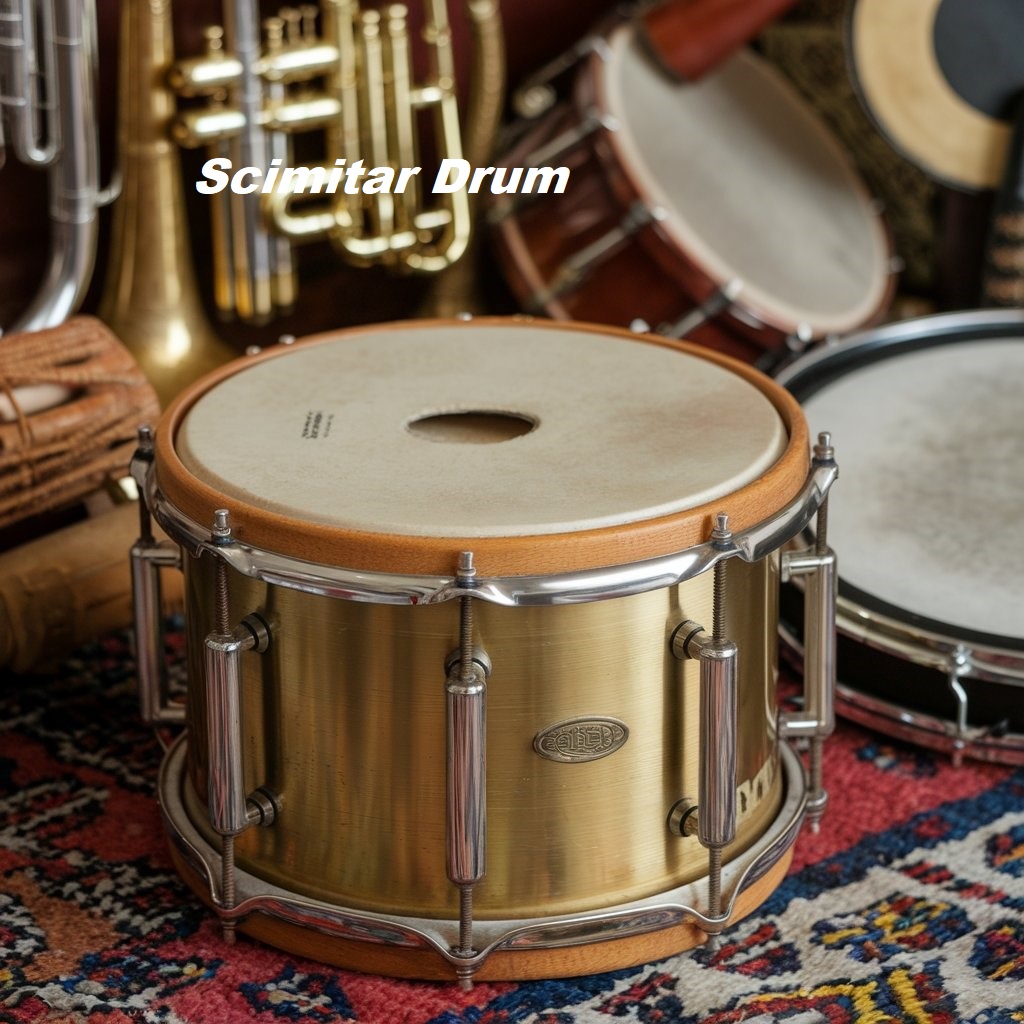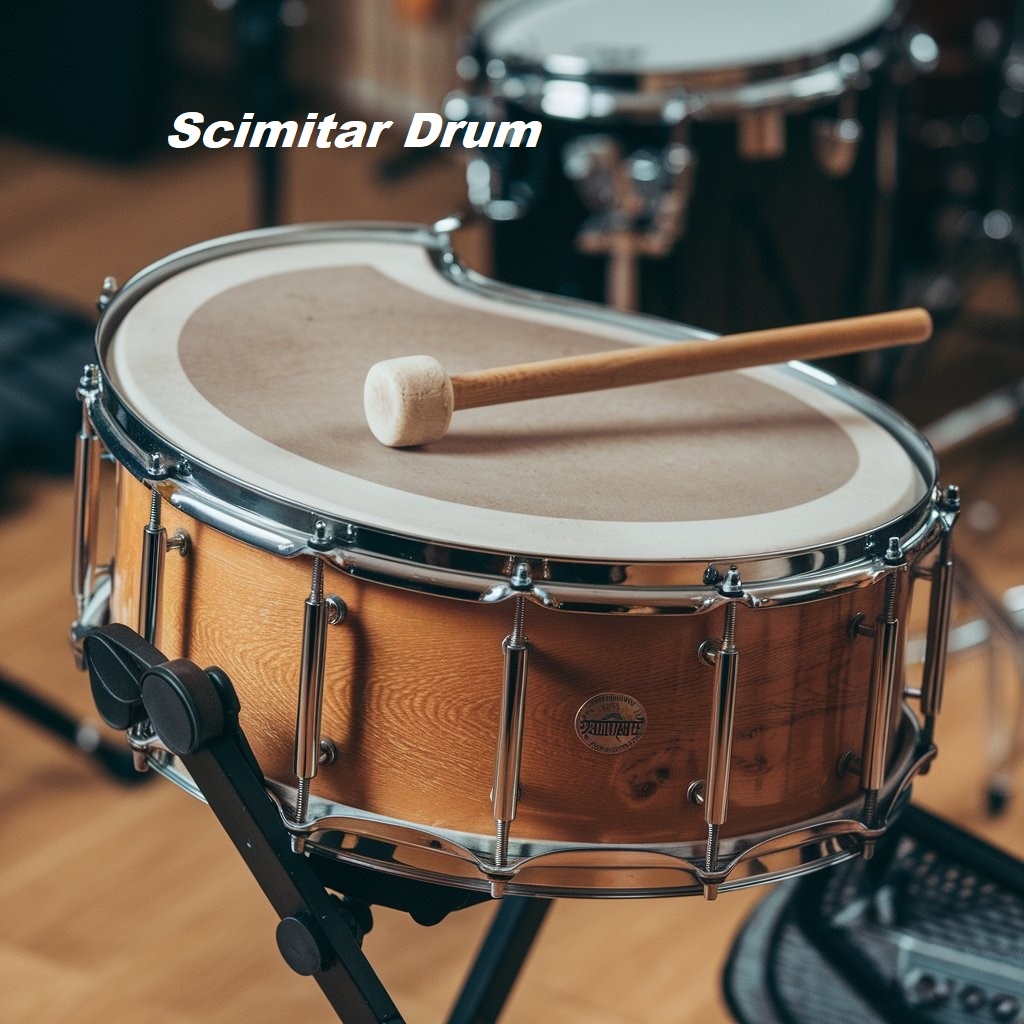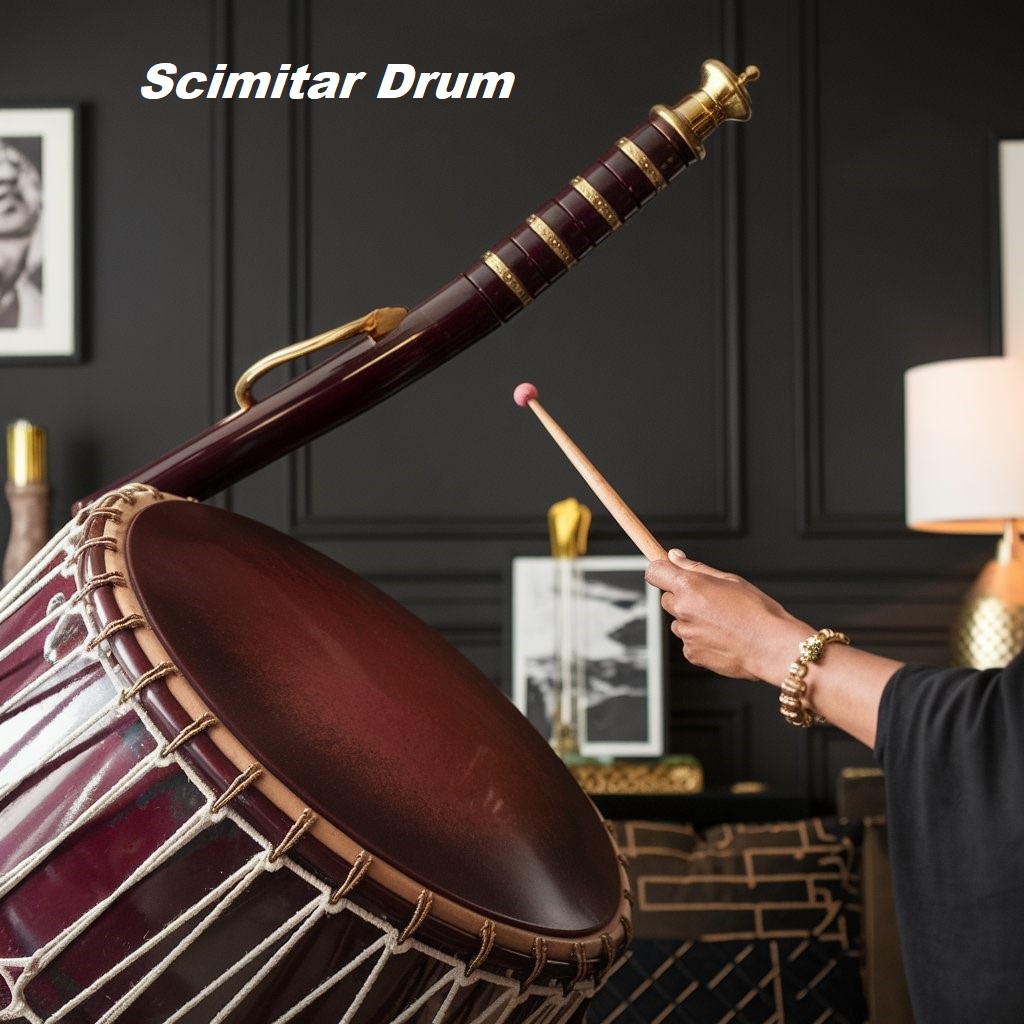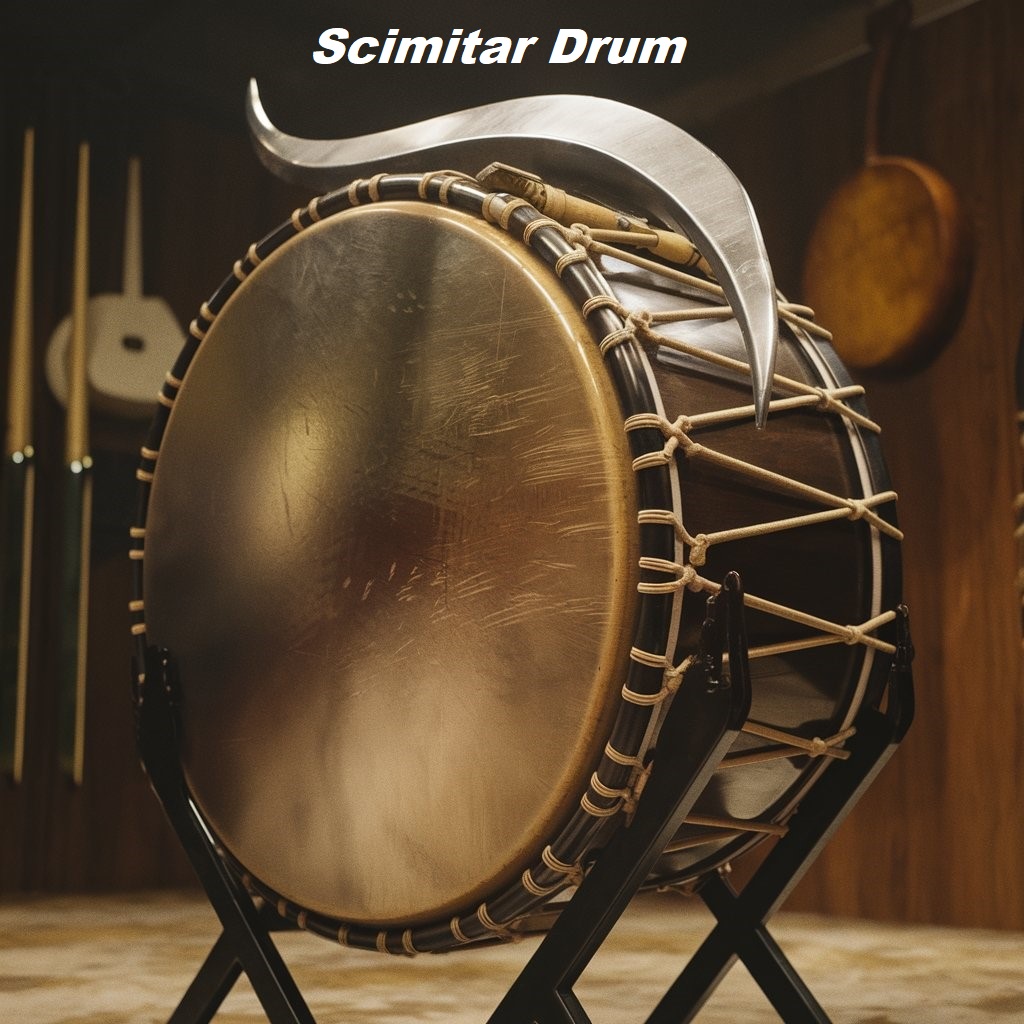Music instruments often carry rich histories that span across cultures and centuries. One such instrument, the scimitar drum, is a powerful symbol of tradition and creativity. With its distinctive curved shape resembling a scimitar sword, this drum has carved its niche in the world of percussive music. In this article, we will dive into the history, design, and cultural relevance of the scimitar drum, shedding light on why it remains a favorite among percussionists across various regions.
The Unique Design of the Scimitar Drum

The scimitar drum stands out with its unique design. Much like the curved sword after which it is named, the drum features a sleek, slightly bowed structure that enhances both its aesthetic appeal and acoustical performance. The body of the drum is traditionally made of wood or metal, which is then covered by a taut drumhead, usually made of animal hide or synthetic materials. This design ensures that produces a range of sounds, from deep, resonant tones to sharp, snappy beats.
The curved shape of the drum serves a dual purpose: not only does it give the instrument a striking look, but it also allows for a more varied tonal range. Unlike typical cylindrical drums, the curved body creates distinct acoustic properties, allowing the drum to resonate differently depending on where and how it is struck.
In modern adaptations, many drum makers have started experimenting with different materials to craft scimitar drums, such as fiberglass, aluminum, or even carbon fiber. These new designs cater to percussionists seeking durability, portability, and a broader tonal palette. However, traditional wooden remain highly coveted for their organic sound.
History and Origins of the Scimitar Drum

The scimitar drum traces its roots back to ancient civilizations. While its exact origin is difficult to pinpoint, many scholars believe it may have evolved from early Middle Eastern and North African drum types. Given the prominence of the scimitar sword in these regions, it’s no surprise that a drum inspired by its shape emerged.
Historically, that were used in ceremonial music, spiritual rituals, and traditional festivals. The drum’s distinctive sound was considered ideal for accompanying processions and dances, where rhythm played a critical role in setting the pace and tone. Over time, the instrument spread across different cultures and regions, each adapting it to their specific musical needs.
In North Africa, for example, the scimitar drum became an integral part of Sufi music, where it was used in dhikr ceremonies to help participants reach spiritual ecstasy through rhythmic repetition. In the Middle East, the instrument was often paired with wind and string instruments, creating the backbone of many traditional ensembles.
The Role of the Scimitar Drum in Traditional Music
The scimitar drum continues to play an important role in traditional music, particularly in Middle Eastern, North African, and Central Asian cultures. Often used in folk and ceremonial settings, this instrument adds a rich rhythmic layer that enhances the overall musical texture.
In many cultures, this is considered a symbol of strength and unity. It has historically been played during times of celebration, such as weddings, harvest festivals, and military parades. The deep, resonating beats of the drum were thought to summon courage and solidarity among listeners, particularly in communal settings where rhythm helped synchronize group movements.
Modern-Day Uses of the Scimitar Drum
Today, the scimitar drum is no longer confined to traditional settings. Many contemporary musicians have adopted it into various genres, from world music to fusion jazz. Its unique sound, coupled with its striking appearance, makes it a favorite for performers who want to blend tradition with innovation.
Notable world percussionists have incorporated that into their performances, highlighting its versatility and timeless appeal. Whether used in a solo performance or as part of a larger ensemble, the scimitar drum continues to captivate audiences with its exotic tones and dynamic rhythms.
Moreover, the drum’s use has expanded beyond music. In some regions, this is also employed in theater and dance performances, adding a dramatic auditory layer that complements visual storytelling. The drum’s deep, resonant tones create an atmosphere of tension, joy, or solemnity, depending on the context of the performance.
Cultural Significance
The cultural significance of the scimitar drum cannot be overstated. For many communities, this instrument is deeply tied to their cultural identity and traditions. It serves not only as a musical tool but as a symbol of heritage, passed down through generations.
In particular, that holds a special place in Sufi traditions. It is often played during Sufi whirling ceremonies, where the repetitive, entrancing beats help participants enter a meditative state. The rhythm of the drum is considered a bridge between the earthly and the divine, guiding dancers into a spiritual trance.
Similarly, in North African Berber cultures, the scimitar drum is associated with communal gatherings, where it plays a central role in both music and social bonding. Whether at festivals, religious ceremonies, or community celebrations, the sound of the drum unites people across generations.
Learning to Play
For aspiring percussionists, the scimitar drum offers a rewarding challenge. While its curved shape might seem daunting at first, learning to play this instrument can open up new rhythmic possibilities. Its design requires a different set of techniques compared to more common drum types, which can make it an exciting addition to any percussionist’s repertoire.
When learning, it’s essential to practice hand positioning and striking techniques. The drum’s curvature means that different areas of the drumhead will produce varied tones, so players must become familiar with these tonal differences to make the most of the instrument’s range.
Additionally, many traditional scimitar drum rhythms are polyrhythmic, meaning they feature overlapping rhythms that require both precision and fluidity. Beginners should focus on mastering the basics before moving on to more complex rhythmic patterns.
How to Incorporate the Scimitar Drum into Modern Music

One of the most exciting aspects of the scimitar drum is its versatility in modern music. With its broad tonal range, the drum can easily fit into a variety of genres, from jazz to ambient music. Many musicians enjoy experimenting with the drum’s acoustic properties. Combining it with electronic beats or layering it over modern instrumentals to create unique soundscapes.
For those interested in world music fusion, this is an excellent choice. Its ability to blend traditional sounds with contemporary genres makes it a standout in any musical arrangement. For example, the deep, resonating beats of the scimitar drum can provide a rich contrast to the bright tones of a guitar or keyboard. Creating a complex and engaging rhythm section.
Conclusion
The scimitar drum is a remarkable instrument with a rich history and a unique design. That continues to inspire musicians today. From its ancient origins to its place in modern music. That has maintained its relevance as a symbol of tradition and innovation. Whether played in traditional folk ensembles or experimental music groups. Scimitar drum offers a diverse range of sounds and cultural significance that few other instruments can match. For percussionists looking to expand their horizons, learning this can be a highly rewarding experience.
FAQs
What is a scimitar drum?
This is a percussion instrument with a curved design, named after the scimitar sword. It produces a wide range of tones and is used in both traditional and modern music.
Where did the scimitar drum originate?
The exact origin is unclear, but this is believed to have roots in ancient Middle Eastern and North African cultures.
What materials are used to make scimitar drums?
Traditional scimitar drums are made from wood or metal with drumheads made of animal hide. Modern versions often use synthetic materials like fiberglass or carbon fiber.
How is the scimitar drum played?
The drum is played by striking the drumhead with the hands or sticks. Different tones are produced depending on where and how the drum is struck.
What is the cultural significance of this?
In many cultures, the scimitar drum is a symbol of heritage and is used in religious. Ceremonial, and communal music settings.
Can the scimitar drum be used in modern music?
Yes, that has been successfully incorporated into various modern genres, including world music, jazz, and fusion.
Also Visit: the trendy peach









